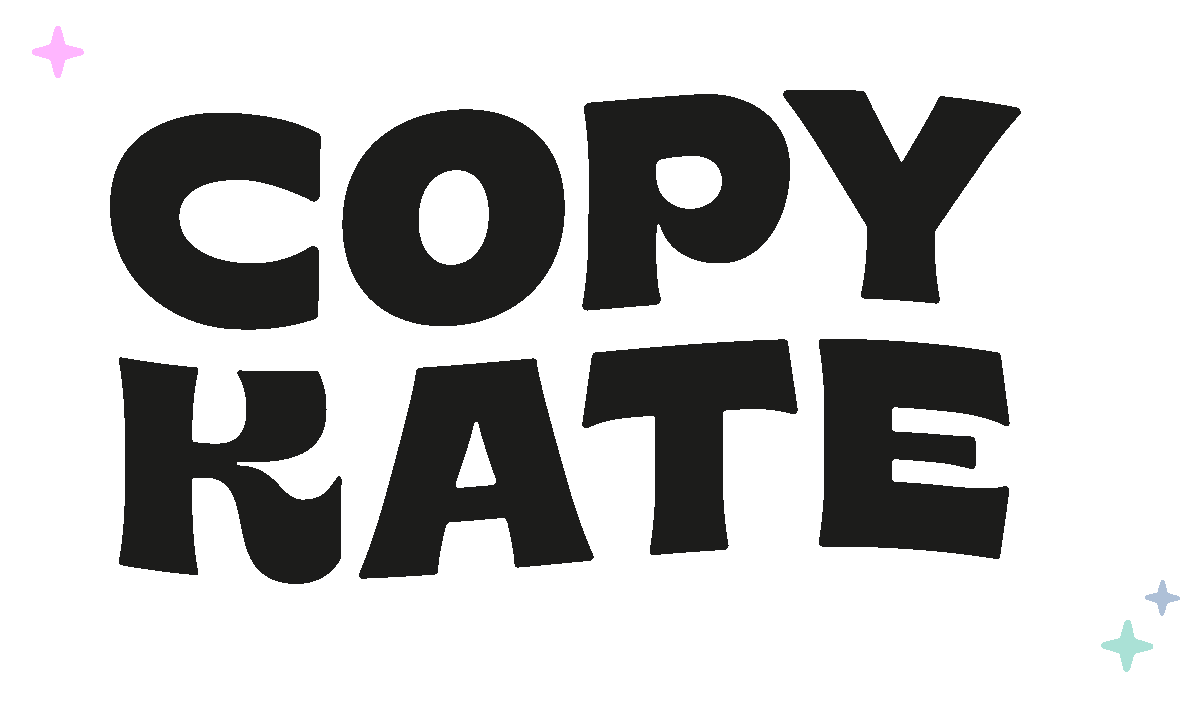Why you shouldn’t fear filler words (oh and, how to use them correctly)
Think copywriting is all about A+ grammar and flawless, polished sentences? Think again.
At its heart, great copywriting isn’t about linguistic perfection. It’s about making authentic, meaningful connections with real people.
And surprisingly, one powerful (but often overlooked) way to build these connections involves something you've probably been taught to avoid at all costs: filler words.
Yep, filler words. You know them as the “ums,” “likes,” “actuallys,” and “y'knows” you use in everyday speech. Typically dismissed as meaningless fluff, these little words can dramatically improve your copy—when used intentionally.
Here’s how it works.
Um, What Are Filler Words?
Filler words are short phrases or sounds we use subconsciously in conversation, especially when we're thinking, hesitating, or pausing to emphasize a point.
Common filler words include:
Um
Ah
Like
Y'know
Actually
Basically
Honestly
Yes, they're often viewed as verbal clutter—signals of uncertainty or nervousness. But here’s the thing: when you're writing copy, strategically placed fillers can breathe life into your content, making it sound conversational, genuine, and relatable.
How Filler Words Improve Your Copy
You might be thinking, Seriously? Those awkward little words can improve my writing?
Absolutely—and here’s why:
They Make Your Copy Feel Human (and Friendly!)
Let's face it—nobody enjoys reading stiff, formal text. People crave genuine interactions. Your readers want copy that sounds like it's coming from a real person—not a robot. Think about how you chat with friends over coffee. You don’t talk in flawless sentences. You pause. You hesitate. You naturally add little words to bridge your ideas and fill silences.
Filler words replicate this conversational rhythm, helping readers feel as if they're engaging directly with you.
For example:
Without filler: "We've got news to share."
With filler: "Eeek.. we've got some seriously exciting news!”
Notice how the second sentence instantly sounds warmer and more personable? That’s exactly what filler words do.
They Build Real, Authentic Connections
Your audience isn’t just scanning text—they’re looking for connection. In an age of polished perfection and filtered feeds, authenticity stands out.
Think of filler words as digital eye contact or a subtle nod—they remind your readers there’s a living, breathing human behind the words.
For example:
Without filler: "We made a mistake, and we’re correcting it."
With filler: "Ooops, we made a mistake—but we're owning it and correcting it right now."
Adding filler here acknowledges vulnerability and feels genuine while keeping it professional.
They Help Emphasise Important Points
In spoken conversation, you pause or add little filler words naturally before making an important point. Why? Because pauses draw attention.
The same principle works in writing. Using filler words intentionally creates emphasis points in your copy—guiding readers exactly where you want them.
Consider this example:
Without filler: "Our new planner helps you stay organised."
With filler: "Our new planner helps you stay organised—and, honestly, it might just save your sanity!"
How to use Filler Words correctly (Without overdoing it)
Filler words have power—but, of course, there's a catch. Too many fillers and your writing will seem messy and amateur. Too few, and you lose the human touch you're trying to achieve.
Striking the right balance is key:
Stay true to your brand voice: Think about your brand’s personality. If you're friendly, approachable, and conversational, filler words can enhance your style. But if your brand is more formal, authoritative, or professional, keep fillers subtle and strategic. Too many might confuse your audience or dilute your message. Always align filler word usage with how your brand naturally communicates
Know your audience (and write for them): Consider who you're speaking to. A laid-back audience appreciates conversational copy. But writing for corporate executives, technical specialists, or an academic audience? Keep filler words subtle and strategic, using them only to humanise rather than casualise your message.
Be strategic: Don’t toss "um," "actually," or "like" into your sentences randomly. Instead, use filler words intentionally and thoughtfully—at natural moments of transition, emphasis, or to introduce a relatable point. Think of each filler as a conversational tool rather than empty clutter.
Read your copy aloud (it really helps!): The simplest test to know if your fillers are landing naturally is to read your writing out loud. If it feels smooth, natural, and conversational—you're onto something good. But if you stumble, hesitate awkwardly, or notice your sentences feel cluttered or forced, dial your fillers back until it sounds right.
Don’t be afraid to edit: After adding filler words, revisit your copy with fresh eyes. Be ruthless about editing out fillers that don't serve a clear purpose or enhance readability. Ask yourself, "Does this filler word add authenticity, emphasis, or a conversational feel?" If the answer's "no," cut it. Authenticity doesn’t have to compromise clarity.
The takeaway? Don’t fear filler words - embrace them!
At the end of the day, filler words aren’t flaws—they’re tools. When used intentionally, they add warmth, authenticity, and relatable charm to your copy.
Your readers don’t expect—or want—perfect copy. They want human connection, genuine conversations, and content they can relate to.
